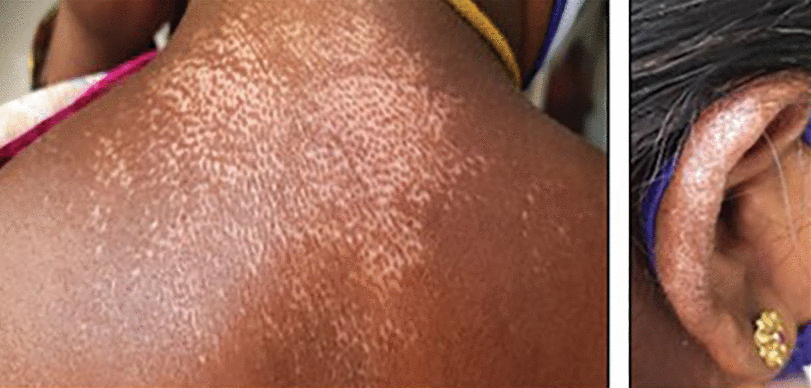Salt-and-pepper skin pigmentation can be an early indicator of systemic sclerosis, even before clinically detectable sclerosis appears. This case study of a 45-year-old female patient highlights the importance of recognizing this distinctive dyspigmentation pattern for early diagnosis and management of systemic sclerosis.
Key Points:
- The patient presented with an 18-month history of skin discoloration on the nape of the neck, ears, and scalp, accompanied by itching.
- Physical examination revealed salt-and-pepper pigmentation in the affected areas.
- Dermoscopy showed homogeneous depigmented areas with perifollicular pigmentation.
- Antinuclear antibody was detected (1:320) in a centromere pattern, which is associated with limited cutaneous disease and less chance of systemic involvement.
- Skin biopsy confirmed the diagnosis of scleroderma.
- Treatment with methotrexate 0.3 mg/kg weekly was initiated to prevent cutaneous progression.
- Salt-and-pepper pigmentation occurs in areas of cutaneous sclerosis and is characterized by vitiligo-like depigmentation with sparing of perifollicular areas.

Salt-and-pepper skin pigmentation of the nape of the neck and pinna.
More in Dermatology

